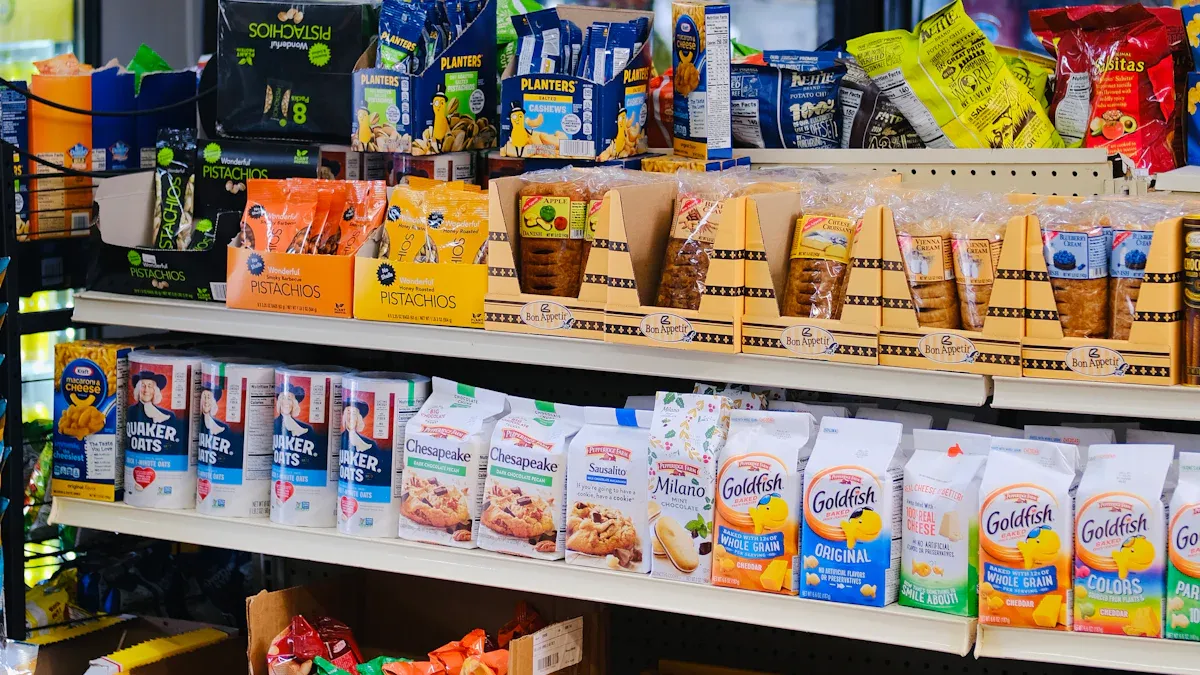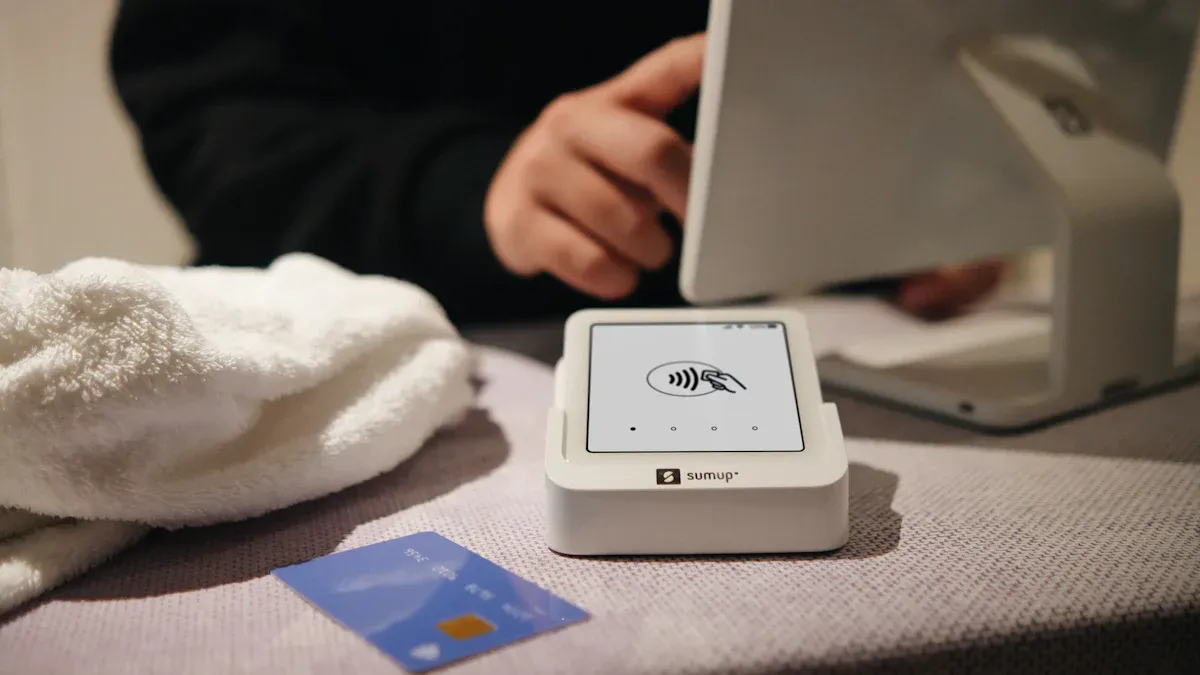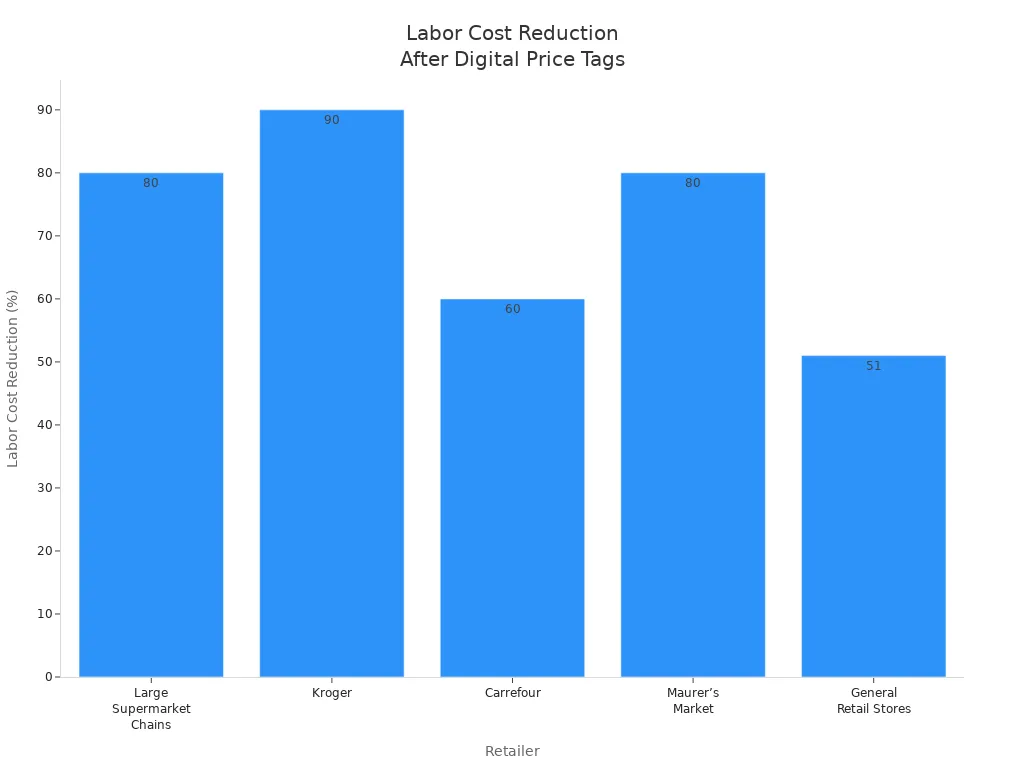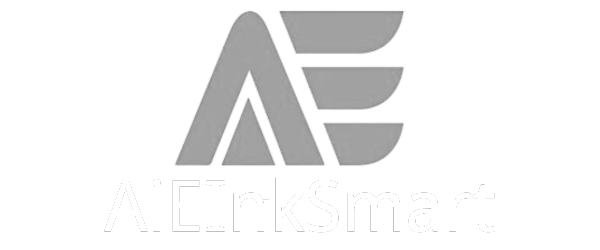
Digital price tags and electronic shelf labels transform retail environments by providing instant price updates. Shoppers encounter less confusion and find accurate deals with ease. Walmart reports that updating prices for 120,000 items once required two full days using paper labels, while digital price tags now complete this task in minutes. Retailers using ESL Gateway AP and ESL Price Tag technology manage prices efficiently, promoting better customer service. Esl Retail solutions support faster, clearer shopping experiences for everyone.
What Are Digital Price Tags and Electronic Shelf Labels?

Definition and Basic Function
How digital price tags work in stores
Digital price tags use advanced display technology to show product prices and information directly on store shelves. Retailers connect these tags to a central system using wireless networks such as Wi-Fi, Bluetooth, or RFID. Staff update prices, promotions, and product details instantly from a computer or mobile device. This system eliminates manual price changes and ensures every shelf displays accurate information.
Tip: Digital price tags help retailers communicate brand values and unique selling points through dynamic signage, enhancing the store’s image.
Where you’ll find electronic shelf labels
Electronic shelf labels appear in a wide range of retail environments. Supermarkets, pharmacies, electronics stores, and fashion retailers use these labels to manage thousands of products efficiently. Grocery stores rely on electronic shelf labels for real-time updates on fresh food items, while electronics stores use them for dynamic pricing and promotional content. Healthcare and specialty shops also benefit from the transparency and flexibility these labels provide.
Types of Digital Price Tags
Electronic shelf labels (ESLs) with e-paper screens
The most common type of electronic shelf labels features e-paper screens. E Ink ESLs offer excellent readability, low power consumption, and long battery life. Supermarkets and pharmacies prefer these labels because they display static pricing and product details clearly, even in bright lighting. E-paper screens retain images without power, making them reliable during outages.
Interactive and multi-color price displays
Retailers also use LCD and LED ESLs for interactive and promotional displays. LCD ESLs support high-resolution images and frequent updates, making them ideal for electronics and fashion stores. LED ESLs provide bright, attention-grabbing visuals for special offers in high-traffic areas. Some stores use RFID labels for inventory tracking, but these do not display prices.
| Label Type | Key Features & Uses | Cost Range (Initial) | Maintenance & Lifespan |
|---|---|---|---|
| E Ink ESLs | Low power, high readability, long lifespan; common in supermarkets and pharmacies. | Medium ($5–$20) | Low maintenance; battery lasts ~5 years. |
| LCD ESLs | Dynamic content, high-res images; suited for electronics, fashion stores. | High ($100–$200+) | Medium maintenance; software updates needed. |
| LED ESLs | Bright, attention-grabbing; used for promotions and high-traffic areas. | Moderate ($10–$50) | Short bursts of power; limited text capacity. |
| RFID Labels | Inventory tracking, not for price display. | Low ($1–$10) | Requires readers; higher upfront cost. |
How Digital Price Tags Differ from Paper Tags
Key differences in technology and usage
Digital price tags use e-paper or LCD technology, while traditional paper tags rely on printed labels. Staff update digital tags remotely, reducing manual labor and errors. These tags display more than just prices—they show promotions, product details, and allergy warnings. Synchronization with checkout systems ensures shelf prices match register prices, improving accuracy.
| Feature/Aspect | Digital Price Tags (Aldi) | Traditional Paper Price Tags |
|---|---|---|
| Display Technology | E-paper displays that mimic ink on paper, consume minimal energy, and retain images without power | Printed paper, static, no power needed |
| Update Mechanism | Wireless connectivity to central system; real-time, remote updates | Manual replacement by staff walking aisles |
| Information Displayed | Prices, promotions, unit pricing, allergy warnings, product details | Limited to product name and price only |
| Synchronization with Checkout | Instant synchronization ensures shelf price matches register price | No synchronization; prone to discrepancies |
| Energy Consumption | Very low energy use; long battery life (several years) | No energy consumption |
| Labor and Efficiency | Reduces manual labor; staff save time; fewer pricing errors | Labor-intensive; prone to human error and delays |
| Reliability During Power Outage | E-paper retains last displayed price without power | Not applicable |
| Environmental Impact | Reduces paper waste and electronic waste due to long battery life and less frequent changes | Generates paper waste; frequent replacements needed |
| Flexibility and Transparency | Can display detailed, dynamic information improving customer experience | Static information; limited transparency |
Advantages over traditional paper tags
- Retailers save up to 50% on label management costs by reducing printing, distribution, and labor.
- Centralized updates minimize errors and improve operational accuracy.
- Dynamic pricing allows stores to respond quickly to market changes.
- Real-time inventory monitoring prevents out-of-stock situations.
- Digital price tags support sustainability by eliminating paper waste and reducing energy consumption.
- Enhanced customer satisfaction results from accurate, up-to-date pricing and promotions.
How Digital Price Tags Benefit Shoppers

Real-Time, Accurate Pricing
No more outdated or incorrect prices
Shoppers often encounter frustration when shelf prices do not match checkout prices. Digital price tags solve this problem by synchronizing instantly with the store’s central database. This technology eliminates human error in price updates and ensures that every shelf displays the correct price at all times.
- Real-time synchronization between the store’s database and shelf tags prevents outdated prices.
- Integration with point-of-sale systems guarantees that the price on the shelf matches the price at checkout.
- Automation reduces the risk of mistakes, leading to a 60% increase in pricing accuracy and a 58% reduction in human error.
- Retailers report a 90% drop in pricing errors after adopting electronic shelf labels, resulting in fewer customer disputes and complaints.
Note: Consistent and accurate pricing builds trust and confidence, making shopping less stressful for everyone.
Instant updates for sales and discounts
Retailers can adjust prices for sales, discounts, or promotions within minutes. Shoppers see these changes immediately on the shelf, which means they never miss out on a deal due to slow manual updates.
- Agile pricing allows stores to respond quickly to demand, seasonality, or competitor pricing.
- Flash sales and limited-time offers become visible to shoppers the moment they go live.
- Staff spend less time updating prices and more time assisting customers, improving the overall shopping experience.
Easier Price Comparisons
Quickly spot the best deals across shelves
Digital price tags make it simple for shoppers to compare prices and find the best value. The technology provides accurate, real-time prices, reducing confusion and ensuring that shoppers can make informed decisions.
- Prices update instantly to reflect current promotions and discounts.
- Interactive features, such as QR codes or NFC, allow shoppers to access detailed product information and compare prices on the spot.
- Mobile apps linked to shelf tags offer real-time price alerts and flash sale notifications, helping shoppers track price changes and maximize savings.
Transparent pricing throughout the store
Transparency in pricing helps shoppers feel confident about their purchases. Digital price tags display consistent prices across all shelves and synchronize with online and mobile channels.
- Shelf prices always match checkout prices, eliminating discrepancies that cause confusion.
- Detailed product information, including promotions and discounts, appears instantly on the tag.
- Consistent pricing across channels builds customer trust and satisfaction.
- Quick correction of pricing mistakes reduces checkout disputes and improves shopper confidence.
Tip: Transparent pricing encourages repeat purchases and fosters loyalty among shoppers.
Enhanced Product Information and Promotions
Access to detailed product info and specs
Digital price tags do more than display prices. They provide shoppers with essential product information, such as ingredients, health warnings, or key features.
- Shoppers can scan QR codes to access more detailed product information, digital coupons, or app connectivity.
- Wireless technology enables instant updates to product details, availability, and customer reviews.
- Interactive tags empower shoppers to make informed decisions and reduce the need for staff assistance.
Special offers, loyalty rewards, and flash sales
Retailers use digital price tags to highlight promotions and deliver personalized offers directly to shoppers.
- Visual cues, such as colors, icons, or flashing text, draw attention to special deals.
- Member-exclusive pricing and flash sales target loyalty program members, creating urgency and driving sales.
- Personalized discounts based on previous purchases appear automatically for eligible shoppers.
- QR codes on price tags enable contactless payments and support loyalty initiatives.
Note: Flash sales and instant markdowns engage customers with real-time discounts, increasing satisfaction and encouraging impulse purchases.
Improved Accessibility for All Shoppers
Larger, clearer text displays for easy reading
Digital price tags improve accessibility by offering larger and clearer text displays. Retailers select font sizes and styles that enhance readability for shoppers of all ages. E-paper and LCD screens provide high contrast, which helps individuals with low vision identify prices and product information quickly. Bright lighting in stores does not affect the clarity of these displays.
Store managers configure digital price tags to show essential details in bold, easy-to-read formats. Shoppers with visual impairments benefit from these enhancements. The technology supports adjustable brightness and contrast settings, which further increase visibility.
- Large font options make prices visible from a distance.
- High-contrast screens reduce eye strain.
- Clear layouts minimize confusion and support quick decision-making.
Tip: Retailers who prioritize accessible displays create a more welcoming environment for everyone.
Multiple language options for diverse shoppers
Digital price tags support multiple language options, making shopping easier for people from different backgrounds. Retailers in global cities, such as Tokyo, use this feature to serve both local and international customers. FamilyMart’s digital price tags display prices and product information in several languages. This approach reduces confusion and ensures that every shopper understands the details of each product.
Shoppers scan QR codes on digital price tags to access product information in their preferred language. This feature caters to a broad range of language preferences and enhances inclusivity. Retailers configure tags to switch between languages based on store location and customer needs.
| Language Support Feature | Benefit to Shoppers |
|---|---|
| Multilingual text on shelf tags | Clear product details for all customers |
| QR code access to translations | Instant information in preferred language |
| Customizable language settings | Adaptation for local and international use |
Retailers who implement multilingual digital price tags demonstrate a commitment to serving diverse communities. Shoppers feel more confident and comfortable when they see information in their own language.
Note: Multilingual support on digital price tags breaks down language barriers and promotes inclusivity in retail environments.
How Digital Price Tags and Electronic Shelf Labels Benefit Retailers
Faster Price Updates and Fewer Errors
Centralized price management via wireless networks
Retailers rely on electronic shelf labels to manage prices across thousands of products. These digital screens connect wirelessly to a central system, allowing instant price updates throughout the store. Staff no longer walk aisles to change paper tags. Instead, they update prices remotely, saving time and reducing errors. Electronic shelf labels synchronize with checkout systems, ensuring shelf prices match scanner prices. This automation supports quick markdowns, especially for items nearing expiration in grocery stores. Integration with inventory management systems helps optimize stock monitoring and supply chain efficiency.
- Retailers update prices instantly and remotely.
- Shelf prices always match checkout prices, minimizing customer complaints.
- Quick markdowns support dynamic pricing strategies for perishable goods.
Reduced human mistakes and labor costs
Digital price tags eliminate manual price changes, reducing human error and labor costs. Retailers experience significant savings after switching to electronic shelf labels. The following table highlights labor cost reductions for several major retailers:
| Retailer / Example | Labor Cost Reduction / Time Savings |
|---|---|
| Large Supermarket Chains | Up to 80% labor time saved; annual labor cost savings up to $200,000 |
| Kroger | Reduced repricing time from 2 weeks to 5 minutes; up to 90% labor cost reduction |
| Carrefour | 60% reduction in labor costs |
| Maurer’s Market | Price update time cut from 4 days to under 10 minutes; ~80% labor time saved |
| General Retail Stores | Approximately 50% to 52% reduction in labor costs related to price updates |

Retailers typically achieve an average labor cost reduction between 50% and 80% after implementing electronic shelf labels.
More Efficient Staff and Better Customer Service
Staff spend less time changing tags manually
Digital price tags automate pricing updates, freeing staff from repetitive manual tasks. Employees no longer spend hours replacing paper tags. Instead, they focus on more valuable activities. Continuous synchronization between online and physical store prices prevents confusion and errors. Integration with ERP and sales data systems enhances operational control.
- Staff redeploy to customer-facing roles.
- Stores maintain accurate pricing with minimal effort.
- Employees gain time for restocking and merchandising.
More time available for helping customers
With less time spent on manual updates, staff engage more with shoppers. They answer questions, assist with product selection, and provide better service. Digital tags display promotions and product details, helping customers make informed decisions. Enhanced store appearance and accurate pricing build trust.
Tip: Retailers who invest in electronic shelf labels create a more engaging and supportive shopping environment.
Dynamic Pricing for Better Deals
Adjust prices based on demand and inventory
Dynamic pricing strategies allow retailers to respond quickly to market changes. Electronic shelf labels enable real-time price adjustments based on demand, inventory levels, and competitor pricing. Grocery stores use time-based discounts during off-peak hours and markdowns for slow-selling items. Integration with inventory systems triggers automatic markdowns, reducing waste and optimizing stock.
- Time-based pricing offers discounts during specific hours.
- Demand-driven pricing adjusts prices for high or low demand.
- Competitor-based pricing uses AI tools to optimize prices.
Enable flash sales and special events instantly
Retailers launch flash sales and special event pricing with electronic shelf labels. Prices update wirelessly and appear immediately on shelves. Integration with POS systems ensures promotional prices display accurately at checkout. Stores respond quickly to market trends and customer traffic, facilitating dynamic pricing strategies.
- Instant flash sales attract shoppers and boost sales.
- Special event pricing appears in real time, enhancing transparency.
- Customers see clear discounts and promotions, improving confidence.
Note: Electronic shelf labels empower retailers to deliver dynamic pricing, instant promotions, and better customer experiences in grocery and other retail sectors.
Addressing Common Concerns About Digital Price Tags
Are Digital Price Tags Reliable?
Battery life, durability, and e-paper technology
Retailers depend on digital price tags to work reliably in busy store environments. Long battery life reduces maintenance and keeps electronic shelf labels (ESLs) running without frequent replacements. Many ESLs use e-paper technology, which consumes very little energy and can last five to ten years on a single coin cell battery. This technology also ensures that prices remain visible even during power outages. Durability matters as well. ESLs must withstand moisture, cold, and frequent handling by staff and customers. Manufacturers design these devices with robust materials and secure wireless protocols to prevent tampering and maintain consistent operation. Retailers often compare battery life and durability across suppliers, considering usage patterns and maintenance costs before making a decision.
Note: Advanced wireless technologies like ZigBee and Bluetooth LE help extend battery life and improve reliability, making ESLs a practical choice for large retail stores.
System backups and fail-safes for price accuracy
Retailers use several strategies to ensure system reliability and pricing accuracy. They partner with vendors who provide strong technical support and regular software updates. Before full deployment, many stores run pilot programs to test integration with inventory and point-of-sale systems. Regular maintenance and backup plans keep both software and hardware running smoothly. Automated price updates from central databases eliminate human error and ensure instant changes across all products. Staff receive comprehensive training to address discrepancies quickly. Retailers also conduct regular audits and spot checks, comparing shelf prices with system prices to correct any issues. Real-time synchronization across channels helps maintain consistent prices in-store, online, and on mobile apps.
- Automated systems monitor prices and update them instantly.
- Regular audits and staff training support ongoing reliability.
- Cross-channel consistency builds customer trust.
Privacy and Data Security
What data is collected by electronic shelf labels
Electronic shelf labels collect and display a range of data to support store operations and enhance the shopping experience.
| Data Type | Description |
|---|---|
| Real-time Pricing | Updates prices instantly to reflect current strategies. |
| Inventory Levels | Shows stock availability and supports restocking decisions. |
| Promotional Messages | Displays current promotions and marketing messages. |
| Product Details | Shares nutritional facts, ingredients, and technical specs. |
| Customer Interaction Data | Tracks which promotions or products attract attention. |
| Dynamic Pricing | Adjusts prices based on demand and competitor pricing. |
| Targeted Advertising | Offers promotions based on past purchases and online behavior. |
| Stock Availability | Indicates if items are in stock or limited. |
| Competitor Pricing | Shows competitor prices to build trust. |
| QR Codes for Ordering | Enables online ordering directly from the shelf. |
| Customer Reviews | Displays product reviews to inform purchase decisions. |
Retailers also use ESLs to display stock levels, competitor prices, and QR codes for online ordering. Integration with inventory management systems helps improve replenishment and order fulfillment.
How shopper privacy is protected in stores
Shopper privacy remains a top concern for both retailers and lawmakers. Several U.S. states have introduced legislation to regulate or ban digital price tags and ESLs to prevent unfair pricing practices and protect consumer privacy. For example, California requires a single price for all consumers and prohibits the use of ESLs for differential pricing based on personal data. Rhode Island mandates physical price tags alongside digital ones to ensure transparency. Lawmakers have questioned retailers about the use of ESLs for dynamic pricing linked to shopper behavior, but major retailers deny using facial recognition or surge pricing with these systems. While research shows little evidence of privacy violations, ongoing regulatory oversight aims to safeguard shopper privacy and maintain fair pricing practices.
Tip: Retailers should stay informed about local regulations and communicate clearly with customers about how digital price tags work.
Cost and Implementation Challenges
Upfront investment and price range for retailers
Implementing digital price tags requires a significant upfront investment. Retailers must purchase hardware such as digital displays and scanners, upgrade infrastructure, and integrate new software. The cost per ESL unit typically ranges from $5 to $20, depending on size and features. This price includes management software, installation, and ongoing support. Additional expenses may arise from staff training, maintenance, and system upgrades. Despite the initial cost, many retailers find that operational savings and improved customer experience offset the investment within 12 to 18 months.
Training staff and ongoing maintenance
Training staff to use digital price tags presents several challenges. Employees must learn new systems, adapt to updated workflows, and understand how to troubleshoot basic issues. Frequent promotions and product changes require ongoing retraining, which can increase labor costs and affect staff retention. Technical challenges include integrating ESLs with existing point-of-sale and inventory systems, maintaining network reliability, and ensuring data synchronization. Retailers address these issues by offering personalized training modules, hands-on pilot projects, and continuous support. Regular feedback and recognition help staff adapt to new technology and maintain high performance.
- Staff adaptation and change management are essential for successful implementation.
- Continuous learning and support improve adoption and reduce errors.
- Reliable network infrastructure ensures smooth operation of thousands of ESLs.
Accessibility and Inclusivity with Digital Price Tags
Helping Shoppers with Disabilities
Visual enhancements for low vision shoppers
Retailers recognize the importance of making shopping accessible for everyone. Digital price tags offer several features that support shoppers with low vision. E-paper and LCD screens provide high-contrast displays, which improve readability in various lighting conditions. Adjustable font sizes allow stores to present prices and product details in larger, clearer text. This flexibility ensures that shoppers with visual impairments can easily identify essential information.
- High-contrast backgrounds and bold fonts increase visibility.
- Adjustable text size settings accommodate individual needs.
- Clear layouts reduce visual clutter and confusion.
These enhancements help shoppers navigate aisles with confidence. Retailers who implement these features demonstrate a commitment to inclusivity and customer care.
Audio and tactile options for accessibility
Digital price tags also support audio and tactile accessibility. Voice-enabled interactions deliver verbal product descriptions, which assist visually impaired shoppers. These features reduce the need for physical touch, benefiting those with limited mobility. Some systems integrate with mobile devices, allowing shoppers to scan QR codes and receive spoken information about products.
- Voice output provides auditory access to prices and product details.
- Touch-activated tags can trigger audio cues for nearby shoppers.
- Integration with assistive devices supports a wider range of disabilities.
Note: Audio and tactile options create a more inclusive environment, ensuring that all shoppers can access product information independently.
Language Support in Electronic Shelf Labels
Multilingual displays for global shoppers
Electronic shelf labels (ESLs) support quick changes of information in multiple languages. This capability proves especially useful in multilingual regions and tourist destinations. Retailers can update product details, prices, and promotions in several languages without manual translation efforts. AI-powered ESL systems automate the layout of multilingual content, streamlining updates and reducing staff workload.
- Multilingual displays accommodate shoppers from diverse backgrounds.
- Automated translation ensures accuracy and consistency.
- Easy updates allow stores to adapt quickly to changing customer needs.
Global ESL manufacturers provide multilingual teams and remote service capabilities. These services help retailers overcome geographical barriers and deliver localized support to international clients.
Serving diverse communities in retail
Digital price tags play a vital role in serving diverse communities. ESLs increase pricing accuracy by up to 60% and reduce human error by 58%. Real-time synchronization across multiple store locations ensures consistent and transparent pricing, which builds trust among shoppers from various demographics. ESLs display detailed product information, including certifications, ingredients, and origin, meeting the needs of customers seeking specialty or local products.
Retailers use QR codes and dynamic content to connect shoppers with local producers and community stories. This approach fosters engagement and inclusivity, making the shopping experience more meaningful for everyone.
Tip: By embracing digital price tags with accessibility and multilingual features, retailers create welcoming spaces that serve the needs of all shoppers.
The Future of Shopping with Digital Price Tags and Electronic Shelf Labels
Innovations on the Horizon
Integration with mobile apps for remote updates
Retailers continue to invest in digital price tag technology that connects seamlessly with mobile apps. Store managers use these apps to update prices and product information remotely, streamlining operations and reducing manual labor. Electronic shelf labels now support real-time synchronization with inventory and point-of-sale systems, allowing instant changes across thousands of items. This integration improves efficiency, especially for grocery chains that manage large inventories. Mobile apps also enable staff to monitor pricing accuracy and inventory levels from anywhere in the store, which helps maintain consistency and reduce errors.
Mobile app integration empowers retailers to respond quickly to market changes and customer needs, creating a more agile shopping environment.
Personalized shopping experiences and recommendations
Digital price tags are evolving to deliver personalized shopping experiences. Advanced electronic shelf labels use AI-driven analytics to display targeted promotions and recommendations based on shopper preferences. Retailers leverage interactive displays and dynamic content to engage customers, blending physical and digital elements for a hybrid shopping experience. Personalized offers appear directly on shelf labels, encouraging shoppers to explore new products and take advantage of exclusive deals. This approach enhances customer engagement and supports loyalty programs, especially in grocery stores where frequent purchases drive repeat business.
Retailers balance innovation with privacy by implementing transparent data practices and consent mechanisms. These measures build trust and ensure that personalization does not compromise customer privacy.
Expanding to More Stores and Sectors
Adoption in grocery, electronics, and other retail sectors
Electronic shelf labels have gained traction in grocery chains, electronics stores, and specialty retailers. Major grocery chains deploy ESLs to manage real-time price updates, reduce labor costs, and minimize pricing errors. Walmart plans to implement electronic shelf labels in thousands of locations, demonstrating the technology’s scalability. Electronics retailers use ESLs for dynamic pricing and product information, while fashion and pharmacy sectors benefit from instant promotions and inventory management. The COVID-19 pandemic accelerated adoption, as retailers sought safer and more efficient ways to communicate with shoppers.
- Grocery stores use ESLs to highlight fresh food discounts and manage perishable inventory.
- Electronics retailers rely on dynamic displays for product launches and flash sales.
- Specialty shops benefit from detailed product information and transparent pricing.
Potential for global impact and standardization
The expansion of electronic shelf labels signals a shift toward global standardization in retail technology. Retailers worldwide recognize the benefits of real-time updates, operational efficiency, and enhanced customer experiences. Industry analysts predict that ESLs will become a standard feature in grocery, electronics, and other sectors, driving innovation and growth. As adoption increases, manufacturers focus on sustainable designs and advanced connectivity to support diverse retail environments.
The future of digital price tags involves multi-channel integration, advanced personalization, and sustainable retail practices that benefit both shoppers and retailers.
- Digital price tags and electronic shelf labels deliver accurate pricing, clear product information, and improved accessibility.
- Shoppers experience faster, more transparent shopping trips.
- Retailers gain efficiency and reduce costs through streamlined operations.
The advantages of digital price tags far exceed the challenges. Modern retail environments benefit from this technology, making shopping easier and more inclusive for everyone.
FAQ
How long do digital price tags typically last?
Most digital price tags use e-paper technology. These tags often last five to ten years on a single battery. Retailers choose models with long battery life to reduce maintenance and replacement costs.
Can digital price tags display more than just prices?
Yes. Digital price tags show prices, product details, promotions, and even allergy warnings. Some models support QR codes for extra information or online ordering.
Are digital price tags safe for the environment?
Digital price tags reduce paper waste and require fewer replacements than traditional tags. E-paper screens use minimal energy, which helps retailers lower their environmental impact.
Do digital price tags work during power outages?
E-paper digital price tags retain displayed information without power. Prices and product details remain visible, even if the store loses electricity.
How do stores update digital price tags?
Stores update digital price tags wirelessly from a central system. Staff use computers or mobile devices to change prices and product information instantly across all shelves.
Can shoppers with disabilities use digital price tags easily?
Digital price tags support accessibility features. High-contrast displays, large fonts, and audio options help shoppers with visual or other impairments access product information independently.
Are digital price tags secure from hacking?
Manufacturers design digital price tags with secure wireless protocols. Retailers use encrypted networks and regular software updates to protect against unauthorized access.
Do digital price tags support multiple languages?
Many digital price tags offer multilingual support. Retailers can display product information in several languages, making shopping easier for diverse communities.
Tip: Digital price tags help retailers create a more inclusive and efficient shopping experience for everyone.


